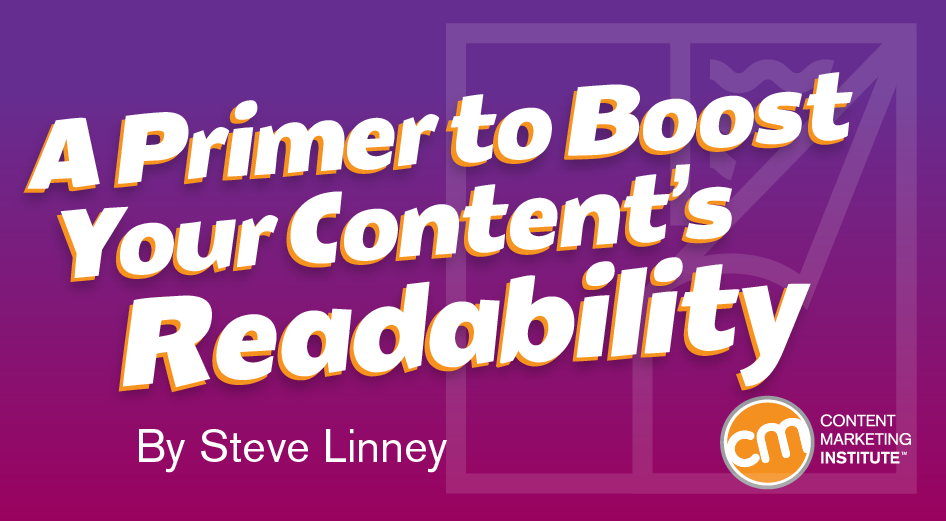When we focused on making it more readable for our audience, business grew. In our business, we collect data on readability and have discovered common issues include: Overuse of long sentences Words with too many syllables Reliance on industry buzzwords and jargon The good news is these mistakes can be avoided by adopting readability measures as part of your content assessment process. Some highlight word by word (or sentence by sentence), the potential readability challenges. Revise to achieve correct reading level As a general rule of thumb, we aim for a reading level of grade eight for our blog posts – which is the level of a 14- or 15-year-old – to ensure that a wide audience can understand our content. Edit to minimize the number of long words but don’t make everything as readable as possible to the detriment of your brand message. It makes the reading experience more personal. (There have been some great additions to this blog post since my first draft, suggested by those who proofread it. Conclusion Readability and content marketing are about the same three principles: Keep your audience at the center of everything you do. Keeping things simple isn’t easy, but practice makes better content. Feel free to include additional tools in the comments (from your company or ones that you have used).

Our content was too academic and didn’t resonate with our audience. When we focused on making it more readable for our audience, business grew. What about you? Is your brand deliberately centered on readability?
At its purest, readability is about keeping things simple. It’s about explaining things in as straightforward terms as possible. Content marketers deliver a wealth of ideas and information, but it’s not always presented in the best way. Among the potential problem areas:
- Length of words and sentences
- Grammar
- Structure of content
- Use of language
Poor readability is a signal that you’re not looking after your audience. It can mean you:
- Spend a lot of time, money, and other resources producing material that doesn’t fit its purpose
- Don’t have an engaged audience
- Lose audience trust, which diminishes customers’ relationship with your business
- Find your customers taking their business elsewhere
- Lose revenue
When the Dutch government used readability tools, it found its content’s readability level (C1 – see scale below) was too high for the majority of readers in the Netherlands, who are at a B1 readability level.

Given that most readers could not fully understand the content distributed by the government, it was not only a waste of taxpayer money but it could have hurt people’s well-being if they couldn’t understand the content related to topics such as social security.
When my toddler fell down the stairs, my wife and I were scared. We went into full-on protective mode and searched on Google to see what danger signs to watch for and whether we should take him to the hospital. (He was fine, as it wasn’t a bad fall.) I’d hate to have been reading advice that was too difficult to understand quickly. Especially when panic, stress, and a crying toddler is added to the mix.
Yet, though the average American reads at an eighth-grade level, consumer-focused medical content frequently is too complex for the average reader, as shown in a comparative analysis of patient education materials from 16 medical specialties.
In our business, we collect data on readability and have discovered common issues include:
- Overuse of long sentences
- Words with too many syllables
- Reliance on industry buzzwords and jargon
The good news is these mistakes can be avoided by adopting readability measures as part of your content assessment process.
How to adopt readability, a step-by-step guide
I will take you through nine steps to ensure that your audience is more likely to consume and engage with your content.
1. Have a customer focus
This is content marketing 101, but it’s the most important aspect. Create content that:
- Is genuinely useful to the reader
- Is relatable
- Answers a question or solves a problem
- Informs, entertains, or educates (preferably all three)
The relatable point is an essential one. Too much content, particularly on websites, is me-me-me – the brand only talks about itself. Avoid doing that at all costs. For example, turn the focus of how you do something to how your readers can benefit by adopting the same practice.
2. Get a baseline score
Once you have your first draft ready, it’s time…

COMMENTS